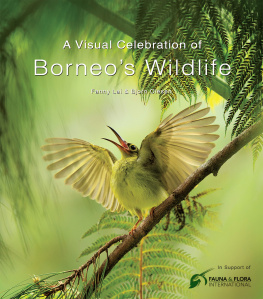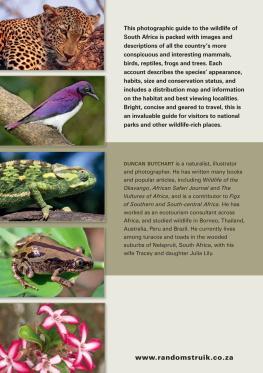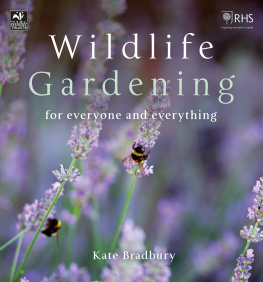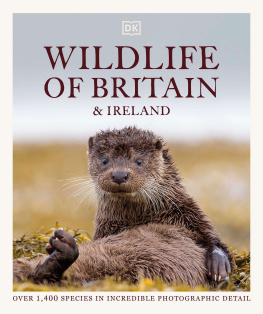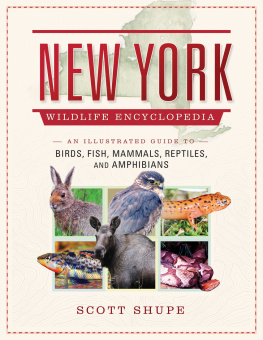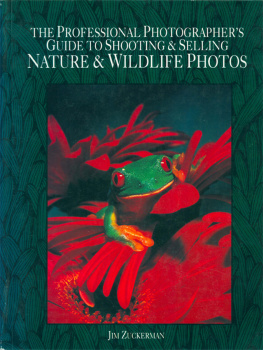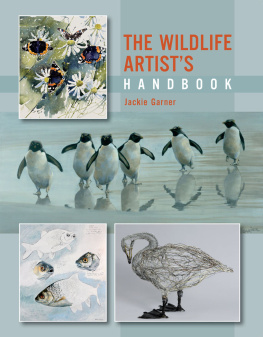Acknowledgements
We would like to thank all the people who have helped and encouraged us to complete our Bornean dream project. Over the extended period it took to complete A Visual Celebration of Borneos Wildlife , we relied heavily on the fieldwork and research of many individuals for a project of this magnitude.
Yong Ding Li, our good friend, agreed without hesitation to take on the job as editor. He did this in spite of having a crowded schedule and was a huge inspiration and a pleasure to work with. His comprehensive knowledge of the fauna in Borneo and Asia impressed us on numerous occasions. Without his experience, network and many suggestions, A Visual Celebration of Borneos Wildlife , as you see it, would not have been possible.
This publication covers a wide spectrum of specialist subjects and we necessarily had to venture into less familiar fields. We were fortunate to receive considerable support from:
Professor Masafumi Matsui from the Graduate School of Human and Environmental Studies, Kyoto University, Japan, who assisted us with the identification of many species in the section on amphibians.
Professor Peter Ng Kee Lin from the National University of Singapore, who helped us with the section on invertebrates and the identification of some of the mangrove and tree-climbing crabs from Bako National Park, including the Scandarma splendidum , which was named by him in 2007.
Lahiru Wijedasa from National University of Singapore, who reviewed and contributed to the chapters on habitats and flora.
Robert B.Stuebing, and Agata Staniewicz from the University of Bristol assisted with photos and details on crocodilians.
David Bickford provided us with the exciting background of the rediscovery of the Endangered Bornean Flat-headed Frog as well as photos.
Merlin Tuttle and Michael Schner, who generously provided photos and information on the Brunei studies of the Hardwicks Wolly Bat.
Khew Sin Khoon was most helpful in assisting us with the invertebrates section relating to Bornean butterflies.
Jaap Vermeulen, Reuben Clements and Liew Thor-Seng helped with the identification of snails in the invertebrates section.
John van Wyhe provided useful comments and material on Alfred R Wallace.
Bryn Dentiger helped with the identification of fungi.
Joseph Lai helped with the identification of spiders in the invertebrate section.
Erik Meijaard provided useful material on the taxonomy of the Southeast Asian mouse deers.
Fellow photographer Lee Chien C., who was an inspiration during our field visits in Sarawak. He was instrumental in introducing us to the wonderful world of Nepenthes pitcher plants in Borneo. Chien was also most helpful with the identification of numerous animal and plant species, and never hesitated to contribute his own exceptional photos to this publication.
And Yeo Siew Teck, who introduced us to many unique locations in Sarawak. He worked long hours at night to find for us numerous nocturnal amphibians and reptiles. He also permitted us to use some of his images of exceptionally rare species, which had only been photographed a few times.
John Mathai was helpful with photographs and details of the Hoses Civet & small carnivore project in Borneo (HOSCAP).
Hans Christiansen from the European Orchid Council, who introduced us to the beautiful world of orchids from Borneo.
As was the case with our previous Panda publication, Zinnira Bani, our design consultant, did a marvelous job with the layout and design and on schedule! Goh Yue Yun, our sub-editing consultant, was a great support, fact-checking and combing our manuscript for language slip-ups.
Thank you to Dr. Tony Whitten and Dr. Stephen Browne for their help and comments to the manuscript.
Paul S. Sochaczewski, who assisted with comments and endorsement.
We are grateful to our friend Wong Siew Te, founder and CEO of Bornean Sun Bear Conservation Centre in Sandakan, for his extensive briefings on the Bornean Sun Bears and personally taking us around his conservation centre.
Also a big thank you goes to Cede Prudente and Mustafa Yalcin for their inspirational companionship during many productive field trips in Sabah.
Thank you goes to the residents of villages of Sungulok Apalin, Sungai Utik and Penepian Raya in West Kalimantan for granting us the permission to document their work and activities.
Our research and numerous trips would also not have been possible without a lot of local assistance with logistics and specialist guiding, and we would like to thank the following for their help in the field and in our final research.
Mark Louis Benedict, Darmawan Liswanto (FFI), Kenneth A. Tizon, Wangkong Intal, Ryan Ecaluxx, Raymond @ Danum Field Centre, Veno Enar, Eko Darmawan (FFI), JoJo @ FFI Putussibau, Azahari Reyes @ Jason, Hamit Suban, Ulrike Bauer.
Fanny & Bjorn
Borneos Great Naturalists


Map of the Malay Archipelago showing the Wallace Line and the region known as Wallacea. At a number of points during the periods of ice ages, most recently up to around 10,000 years ago, Borneo was not an island, but connected to Palawan (the Philippines), Malaysia, Thailand, Vietnam and China by land bridges.
Alfred Russel Wallace (1823 1913)

Alfred Russel Wallace was one of the greatest naturalists and explorers of the nineteenth century. He is probably best remembered as the other scientist, who developed the theory of evolution by natural selection at the same time as his more famous contemporary friend and naturalist Charles Robert Darwin. In the famous letter written to Darwin from Ternate, Indonesia, On the Tendency to depart indefinitely from the Original Type , in 1858, Wallace articulated the ideas of variation and selection, key principles that underline the concept of natural selection.
Most or perhaps all the variations from the typical form of a species must have some definite effect, however slight, on the habits and capacities of the individuals...It is also evident that most changes would affect, either favourably or adversely, the powers of prolonging existence..

Wallace is nowadays widely regarded as the founding father of the discipline of biogeography. His contributions to our understanding of the distribution of species and novel ideas about species formation in the Indonesian archipelago were groundbreaking. This is what he wrote on January 4, 1858, to his friend Henry Walter Bates, also a prominent naturalist, about a proposed zoological demarcation that would later bear Wallaces name:
In this Archipelago there are two distinct faunas rigidly circumscribed, which differ as much as those of South America and Africa, and more than those of Europe and North America; yet there is nothing on the map or on the face of the islands to mark their limits. The boundary line often passes between islands closer than others in the same group. I believe the western part to be a separated portion of continental Asia, the eastern the fragmentary prolongation of a former Pacific continent. In mammalia and birds the distinction is marked by genera, families, and even orders confined to one region.....

